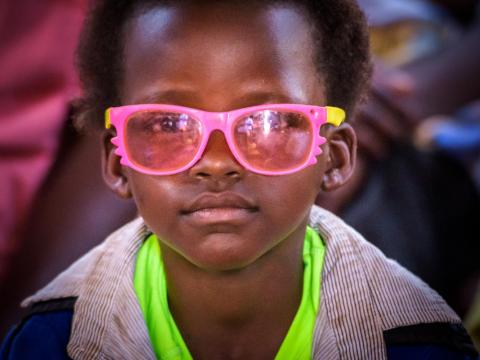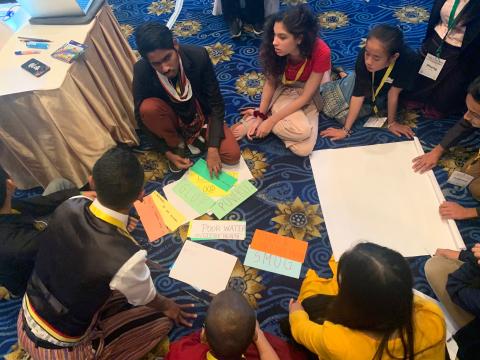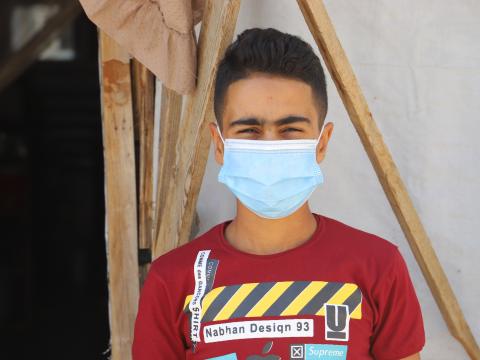
Children: not victims, but climate change allies
A few weeks ago, the Overseas Development Institute (ODI), released a report on ‘Ending violence against children while addressing the global climate crisis’. The report argues that there is increasing evidence to indicate a strong connection between climate change and violence against children. Changes in weather patterns can reduce farmers’ incomes and leave families impoverished, leaving child labour as a means of increasing family income. A sudden flood could leave a family in temporary housing and, fearful for their daughter’s safety, turn to child marriage as a way to settle their daughter’s future and reduce their family expenses.
Yet children should not just be seen only as victims of climate change and violence – their agency can be one of the most powerful tools in overcoming these growing challenges. Engaging children as ‘agents of change’ in the fight for a better world is one of the most powerful but underused strategies adults have at their disposal
Over the past few months I’ve been speaking with children from Ghana, the Democratic Republic of the Congo and Brazil on climate action, and I can confirm that they are passionate and committed to social change, despite experiencing deprivation or conflict themselves. They say that they are seriously concerned about climate change and the impact it is having on their communities. Furthermore, although the literature in this area is nascent, the children are far ahead of us policy specialists; they easily connected the consequences of climate change to negative impacts on their well-being, including increased levels of violence.
The children were also clear that they do not want to be passive subjects of these problems, but instead want to be active creators and implementers of solutions. This perspective contrasts with traditional views of childhood, which portray children as passive recipients of aid or helpless victims. It’s a shift to a portrayal of children that respects them as people with something to bring to efforts to improve our world.
Children are capable of presenting their own views to stakeholders, as well as transforming their views into the actions needed for social change. The term ‘agents of change’ is a powerful one, as it embraces a view where children are seen as competent social actors with the ability to shape and reshape their environments. As someone who works within the childhood studies discipline, I am overjoyed to finally see children being recognised as individuals who have the capacity to make decisions and express ideas, and can therefore speak for themselves.
The ODI researchers detailed multiple examples of the incredible contribution children can make when governments and NGOs are willing to listen. Take the efforts made by children in Nepal, who raised awareness about the need for safe passage during flooding to enable them to commute to school. Or how children from the Philippines conducted mapping exercises on disasters and vulnerabilities affecting their communities. I’ve also heard from amazing children in multiple countries about their efforts to stop child marriages in their community - in Bangladesh one child forum has halted 72 marriages over the past two years.
Children are more than able to understand the problems that they face, and to provide new ideas because these issues are their daily problems. They therefore have a unique insight into potential solutions. Children only need the space and opportunity to engage.
So why hasn’t this already happened? Put simply, because the recognition of children as ‘agents of change’ in climate action requires a transfer of power from adults to children. This is only possible when adults trust children to be catalysts for transformative action, and provide space for climate action on an equitable basis.
What can we do to help make this a reality? Firstly, we must make all efforts to listen to children and young people and support their ideas for action. Secondly, we need to trust children’s abilities and ensure that their voices are heard and taken into account in our own decision-making. Lastly, we should pay special attention to the most vulnerable and hardest to reach children and create spaces for them to be listened to, too.
To read the full consultation with children on climate change visit here.
To learn more about World Vision's climate action work visit here and more about our child protection visit here
Patricio Cuevas-Parra, is World Vision’s Director, Child Participation and Rights.
**If you enjoyed this article why not share with others via social media? Click a logo below**


